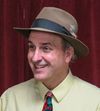Mudslide on Foerster
Rainy Februaries bring thoughts of a dark day on San Francisco's Mount Davidson.
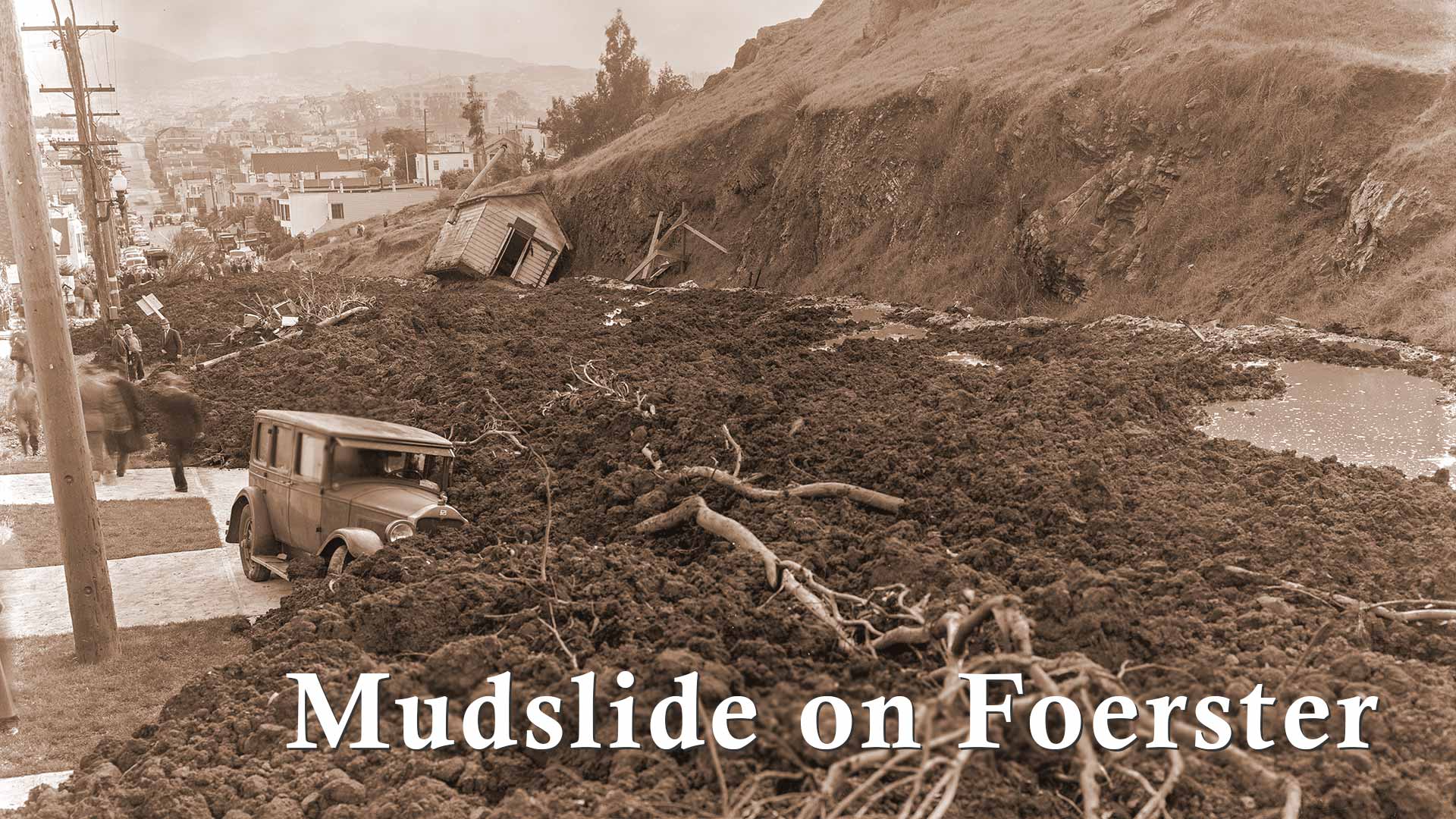
I usually think of Dora Kammer the first week of February. Or when the rains come hard in the city.
It’s the first week of February and an “atmospheric river” has hit town, so I have scuttled my plans for this week’s San Francisco Story to give Ms. Kammer and her brother-in-law, Thomas Hall, some space to be remembered.
Shifting Earth
In the 1920s, when Foerster Street was widened and repaved to handle traffic winding around Mount Davidson, the front door of John Mickelson’s house at 625 Foerster Street ended up 25 feet above the new sidewalk.
This wasn’t an uncommon situation during the city’s extension and creation of streets over its many hills. Pioneer residences accessible by footpaths or crude lanes would often be left dangling high above, or sometimes in a deep well below, the new official street grade.
Mickelson, a carpenter, filled in the gap with concrete forms and an addition. A few years later, during a particularly heavy rainy season in February 1936, the house slowly slid onto the sidewalk atop a pile of mud.
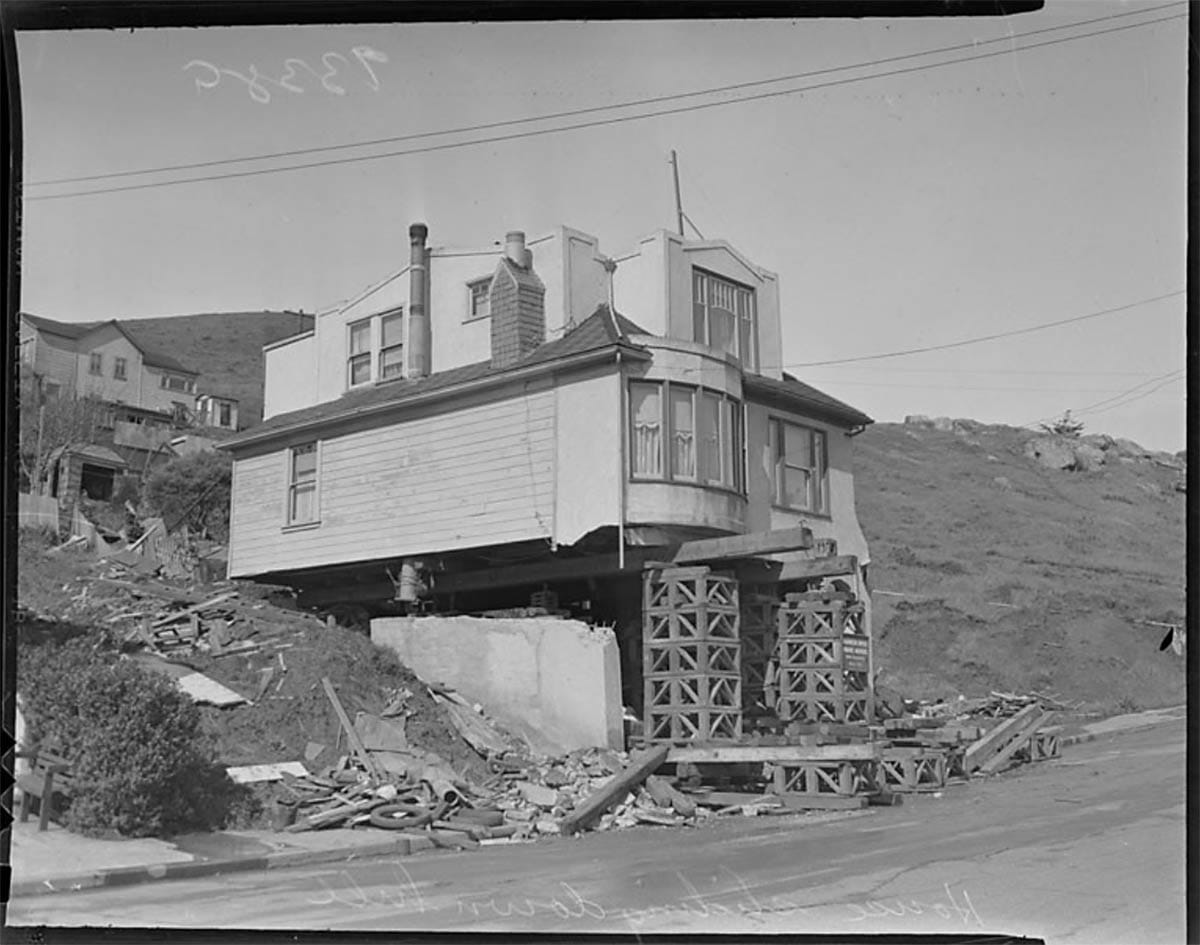
Mickelson was able to save his condemned home and relocate it one block away and across the street at 750 Foerster Street.
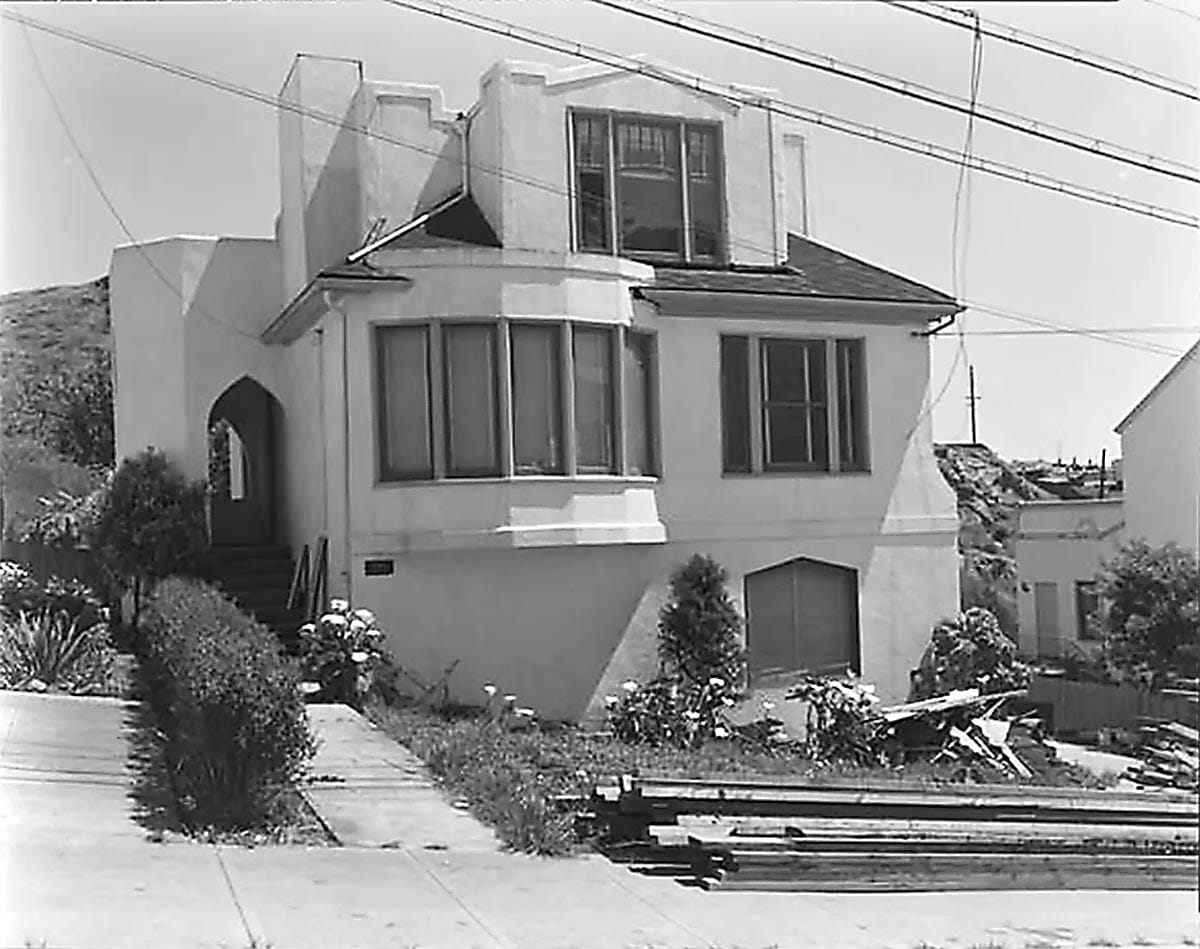
If Mickelson thought himself personally unlucky with his home, he likely reconsidered when he saw how his neighbors across the street fared six years later.
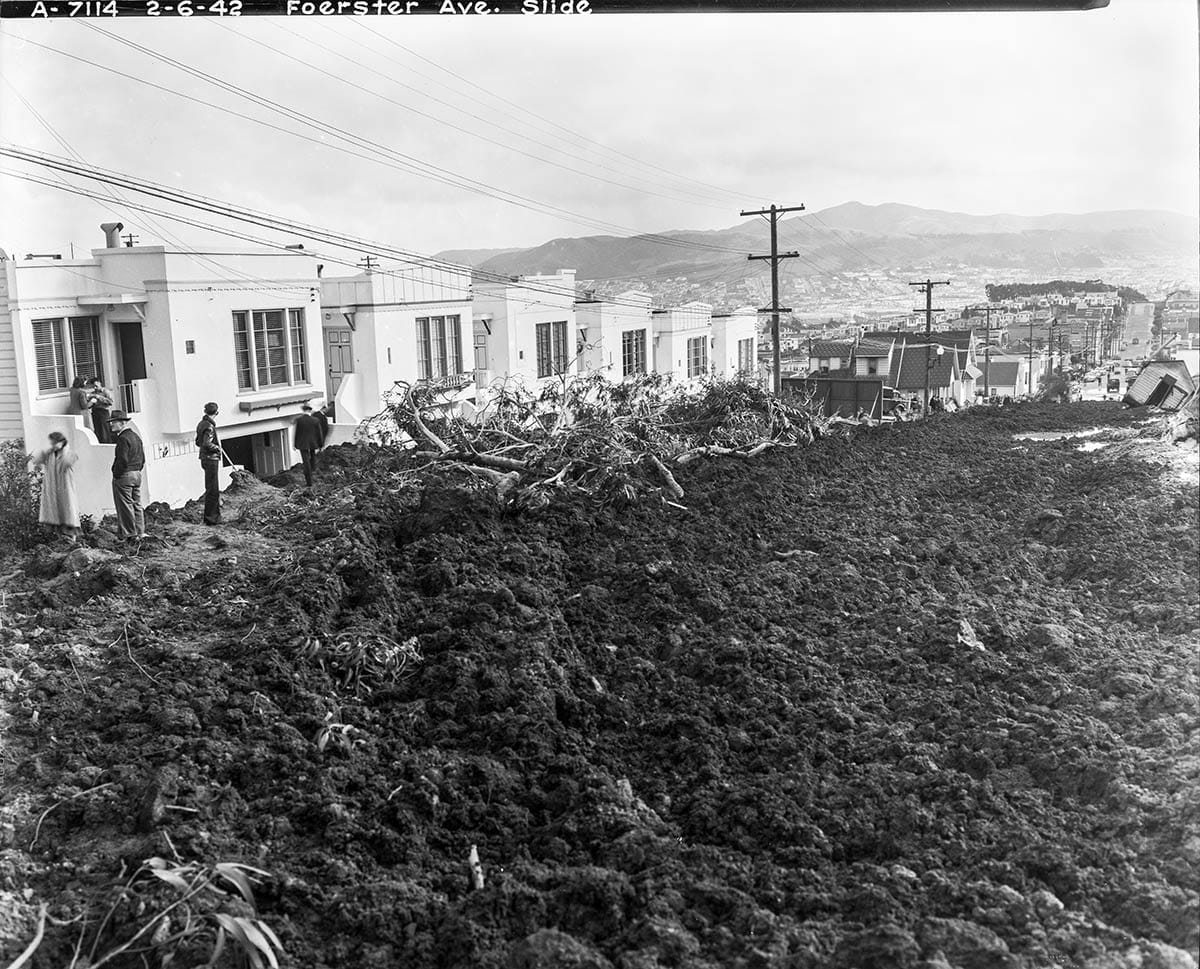
Sea of Ooze
Extended relatives of John Mickelson lived nearby on what appeared on maps as Kenyon Avenue, but was little more than a wiggly unpaved path roughly along part of the path of Los Palmos Drive today.
Dora Kammer, a cook, and her brother-in-law, Thomas Hill, a steamfitter, lived together in a small home at the street’s only address, 375 Kenyon Avenue.
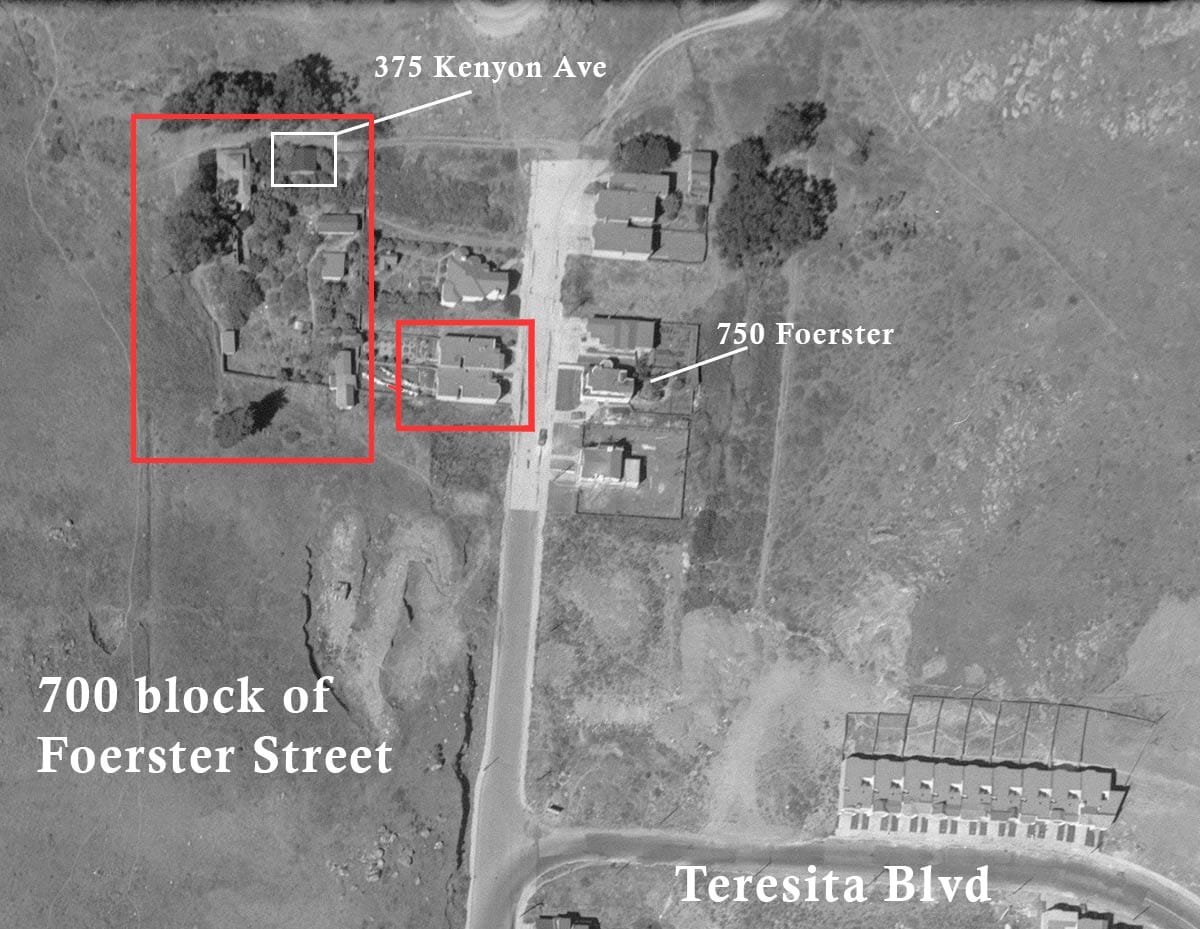
Up the hill to the west, contractors for house-building outfits were busily moving earth around for lines of new homes filling the new winding Mount Davidson streets. On February 6, 1942, after two weeks of storms, mud from a Bella Vista Way embankment broke loose, roared down the hillside “in a lava-like sea of ooze,” to Foerster Street.
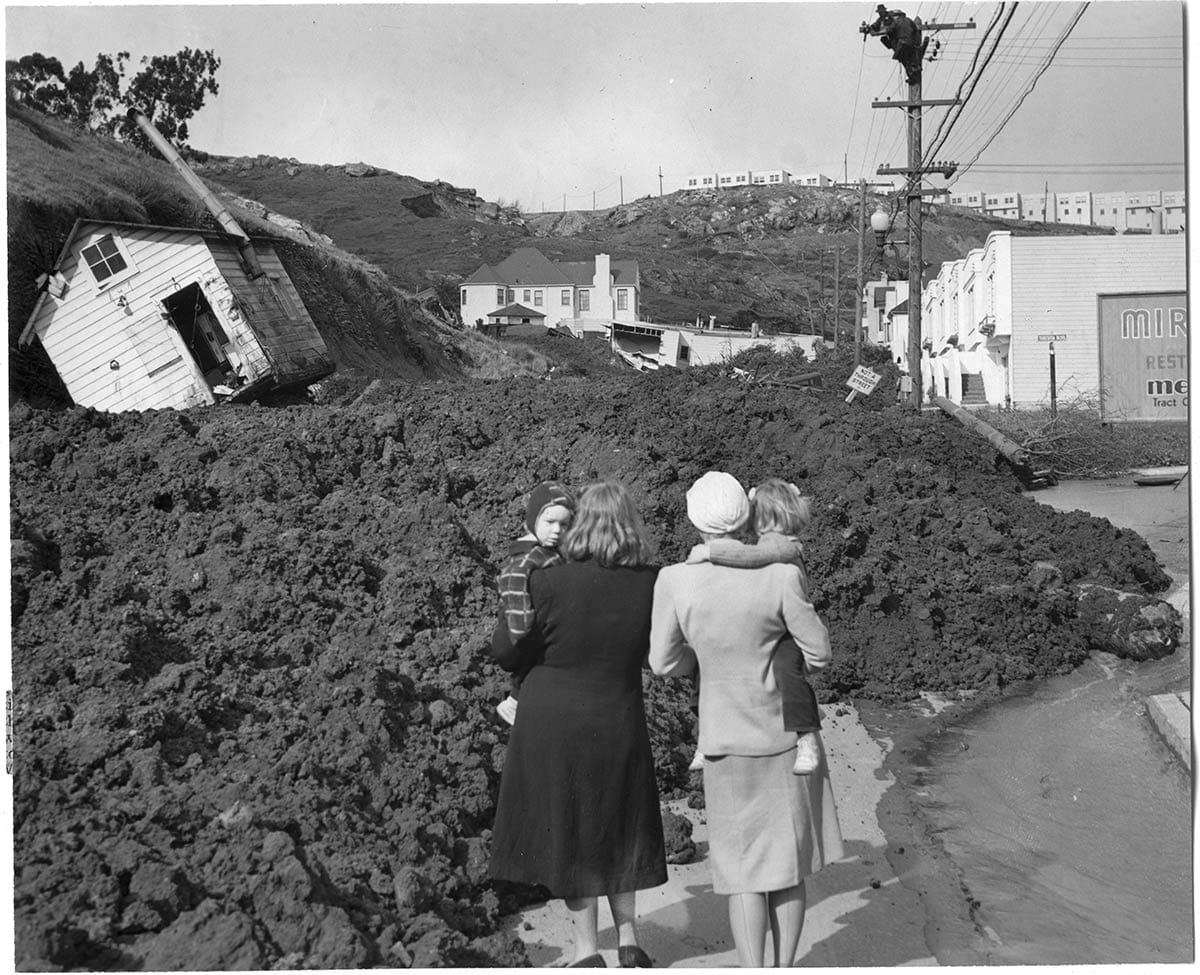
The mud reached a cluster of houses around Kenyon Avenue first.
Dora Kammer was in the kitchen preparing a meal, but Thomas Hill heard what was coming for them. A thundering rumble before uprooted eucalyptus trees crushed the house, which almost completely flipped as an avalanche of mud poured through the walls.
Timbers pinned Hill and ripped into one of his legs while pushing him out a window of the sliding house. His last sight of Dora was her face vanishing under the sea of mud.
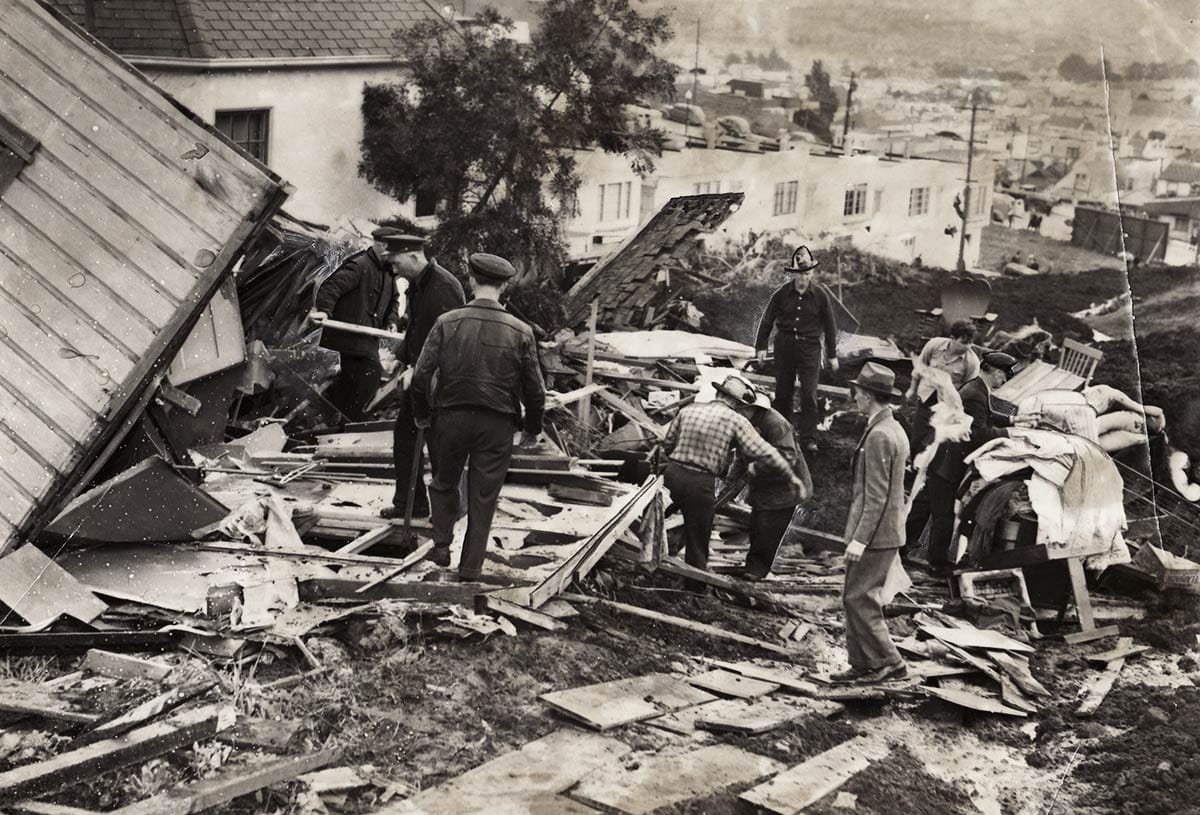
The almost-capsized house precariously settled in the back and side yard of 785 Foester, which was swamped by mud, but managed to stay standing. The earth kept slowly moving, slowly sliding down Foerster, as rescuers arrived and pulled Hill out of the wreckage.
A neighboring house had been clipped by the mud. One bay was ripped free and deposited a couple of blocks away.
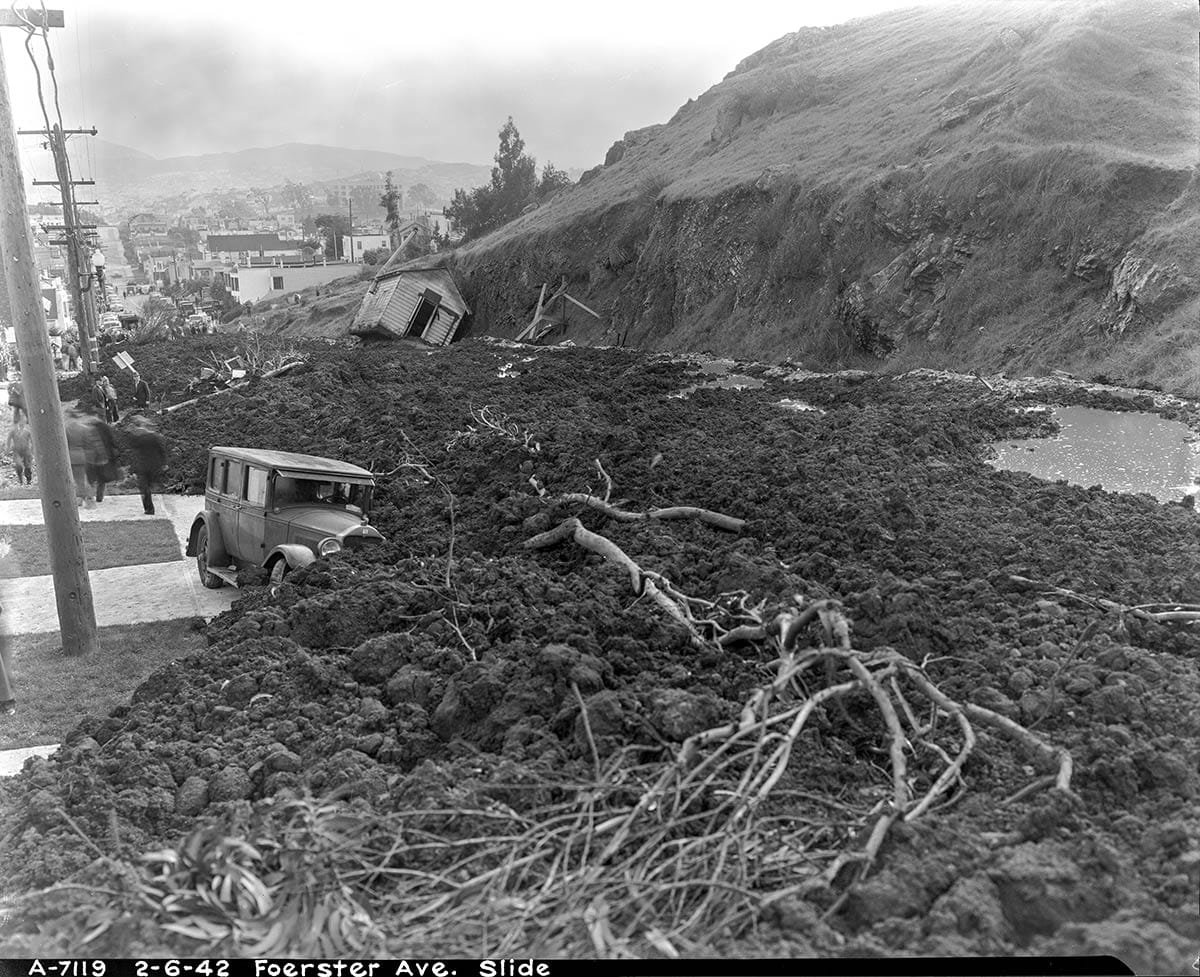
The Bujacich and Taylor houses on the east side of Foerster were shoved into the street; marvelously, no one was injured.
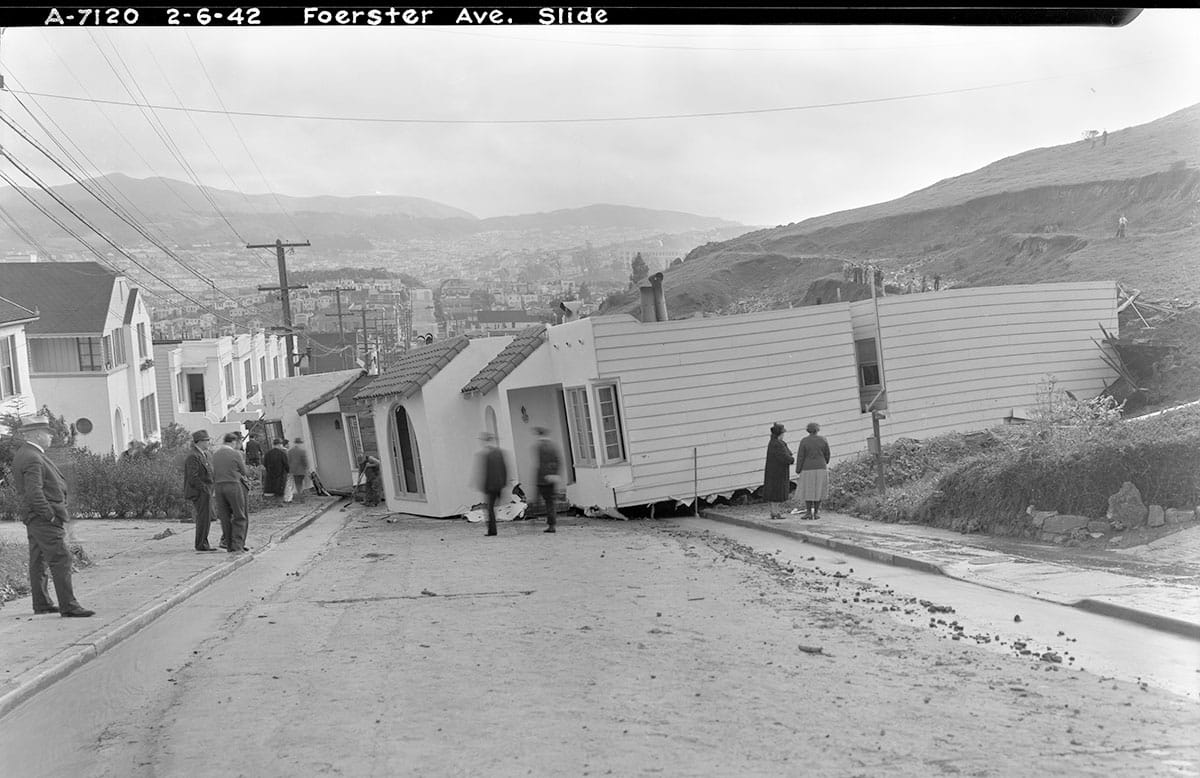
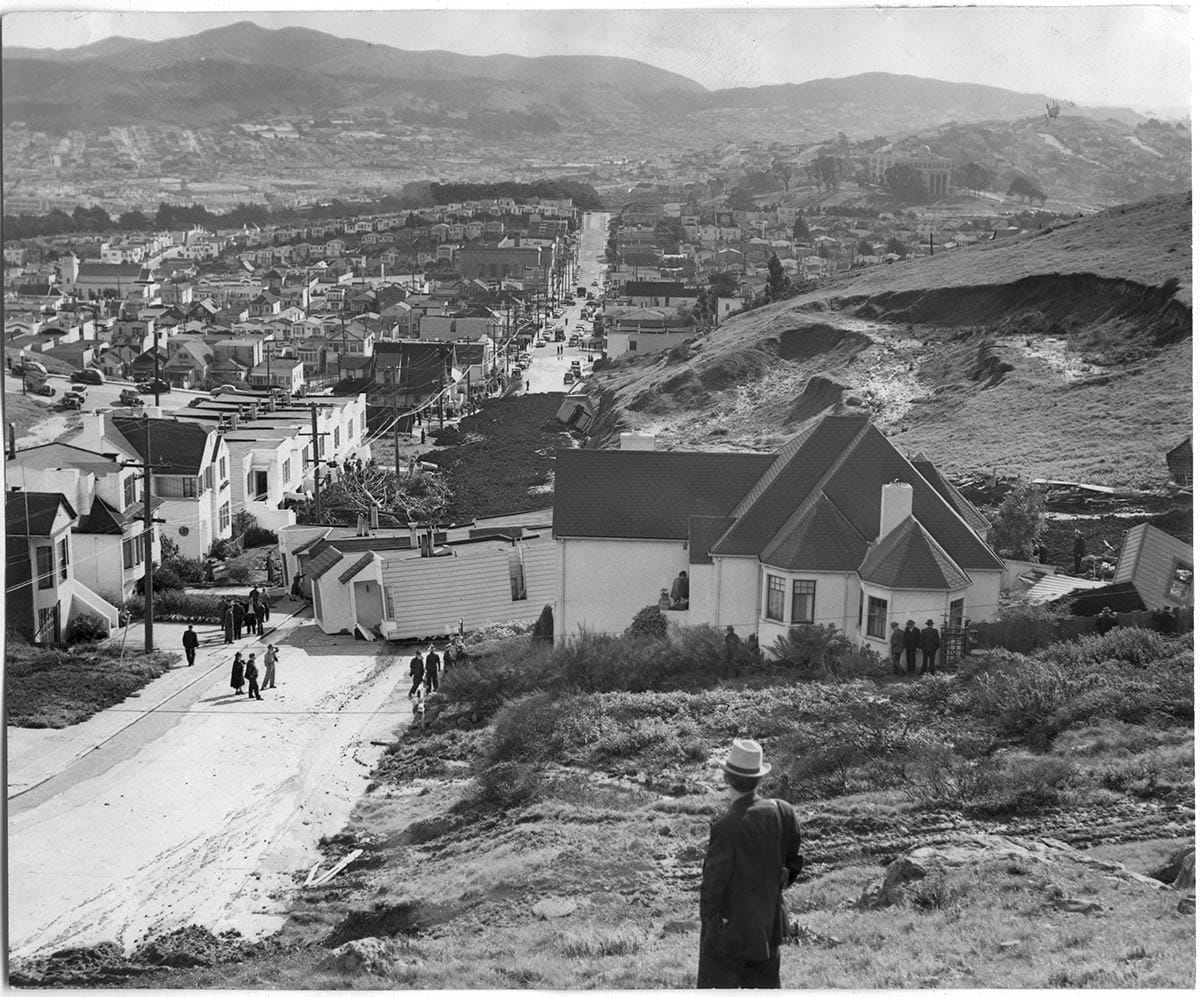
Thomas Hill died from his injuries two days after the slide. It was five days before they were able to recover Dora Kammer’s body from the muck and debris. She died at 62 years old. Never married. No kids, it seems. Her sister, Sophia, Thomas Hill’s wife, had passed away three years earlier.
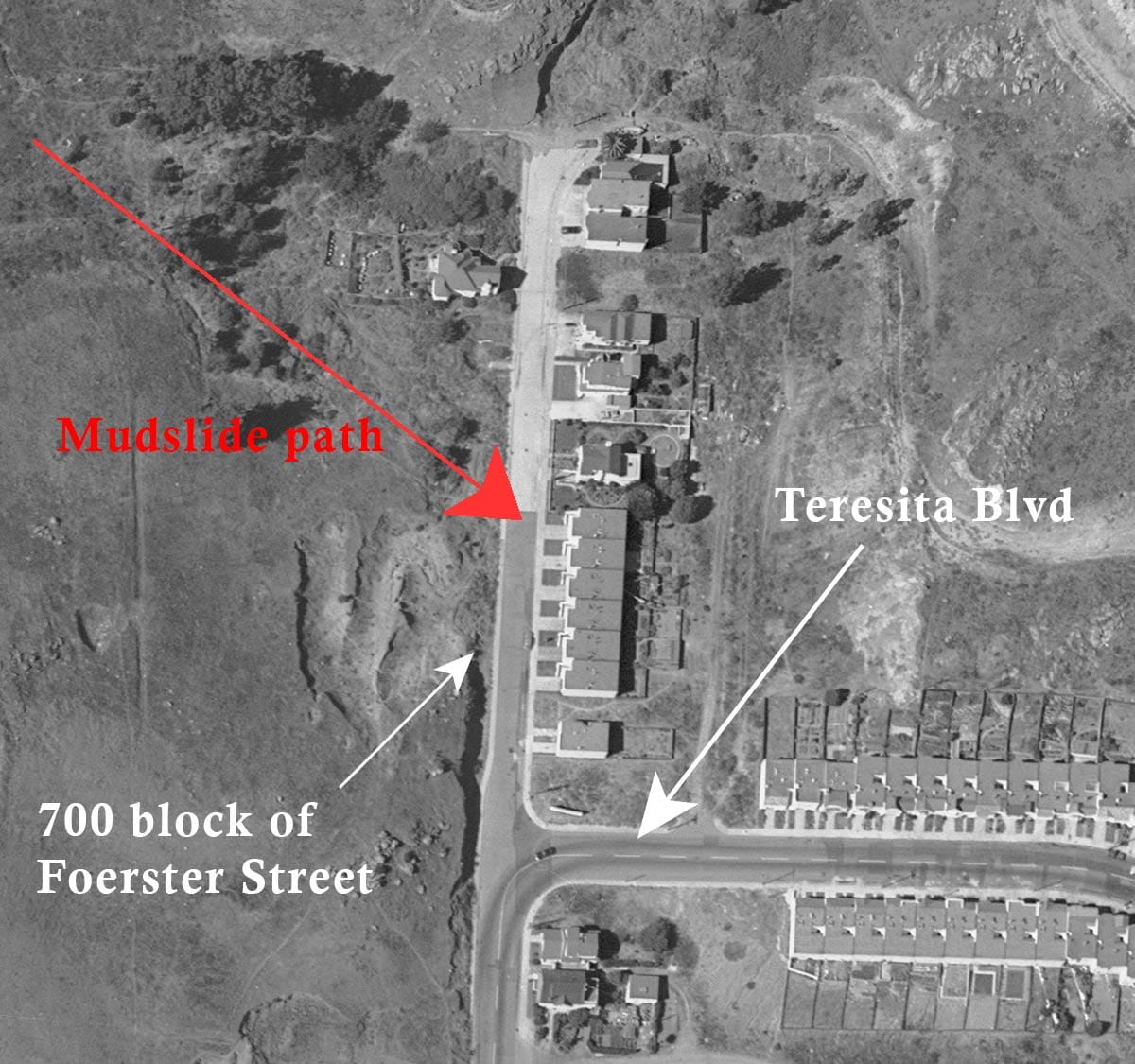
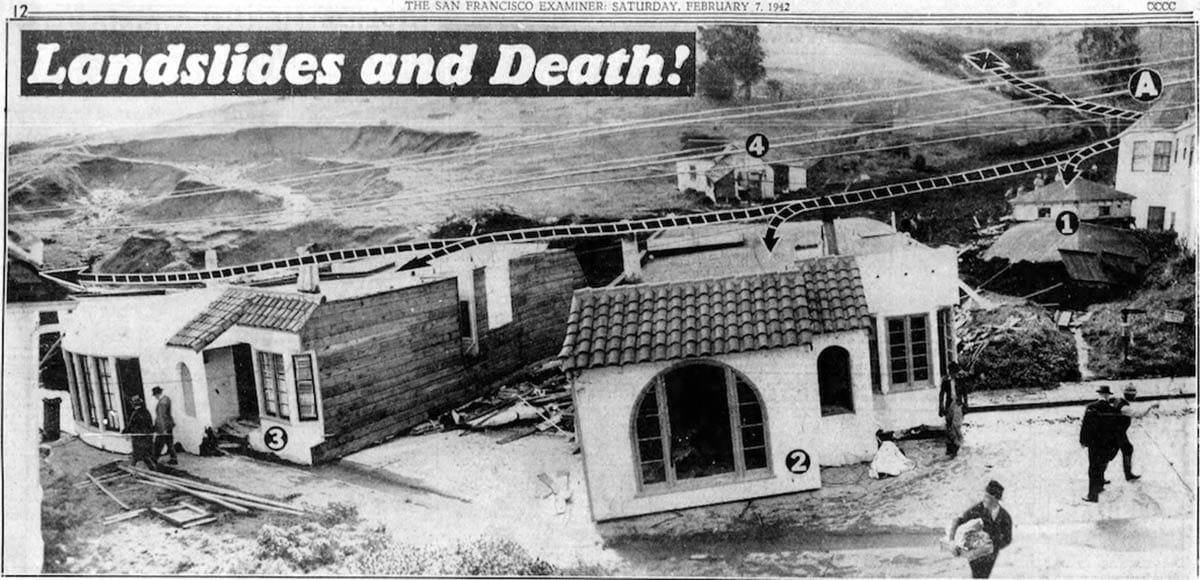
Amy O’Hair, the stellar historian of the Sunnyside neighborhood, wrote in detail about the slide in 2023. Read her article for a close analysis of the cause and path of the slide, each house and family affected, and the extended relationships between the neighbors. Lots more photos too.
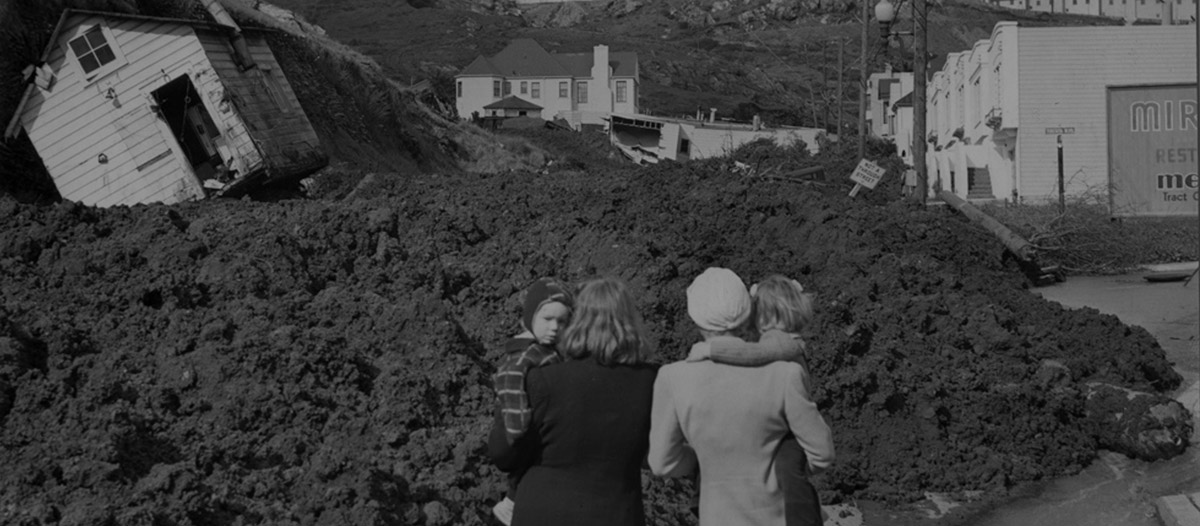
With World War II raging, the city and the neighborhood moved on quickly from the disaster. There were bigger tragedies.
Feels like today. We’ve entered the era of daily disasters, many climate related. Last month’s Los Angeles fires may have set the stage for mudslides this month.
It’s easy to get numb, but I don't want to be numb. To stay human, keep my empathy, continue to feel and try to make things better, I try to focus on individuals.
So, sad as it is, I put myself in Dora Kammer’s kitchen now and then. The first week of February. Or when the rains come hard in the city.
Woody Beer and Coffee Fund

Great thanks to Ann S. (F.O.W.) and Junior H. (F.O.W.) for their contributions to the well-respected and never-audited Woody Beer and Coffee Fund. I have money to buy you a beverage and talk about anything you want. (Maybe we should shy away from discussing the Giants chances this year... I am not optimistic.)
Sources
“Woman Killed in S.F. Landslide,” San Francisco Chronicle, February 7, 1942, pg.1.
“River of Mud: Woman Buried Alive,” San Francisco Chronicle, February 7, 1942, pg. 5.
“Woman Killed in S.F. Landslide,” San Francisco Examiner, February 7, 1942, pg. 1.
Florence Holub, “A Moving Memory,” Noe Valley Voice, November 2003, pg. 37.

